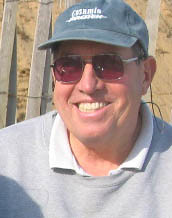
On Saturday February 13th as my wife and I were driving back to Baltimore from the Eastern Shore I received a voice-mail message from our Rector, Mark Stanley with the startling news that our dear old church had suffered a cracked structural beam and perhaps other roof damage as a result of snow accumulation and falling ice from the recent historic snowfall conditions.
When this news reached me, I rerouted and headed directly to the church and let Mark know that I would be there within the hour to inspect the situation. I called upon my friend and fellow parishioner, Basil Acey, to ask for his support as an expert in matters architectural. Basil very graciously offered to meet me at the church. Upon our arrival we were met by Rick Tomlinson and Daniel Rahayel who pointed out the evidence of the structural failure. Basil and I agreed that we needed to take immediate action to make the building safe for use and occupancy and prevent further damage.

A team of construction experts was quickly assembled and a meeting of all parties was underway by 1:30PM. An interior and exterior inspection ensued and the always kind management of the Tremont Grand allowed our team access to rooms throughout the hotel that enabled views of the exterior situation from above. A plan of action was agreed upon with regard to shoring up the damaged areas with scaffolding and timbers and by 3PM work was underway.
In the meantime Mark, Rick and Daniel were making preparations to have Sunday services at the Tremont Grand as we did not feel that the building should be occupied until the shoring was in place and an engineering inspection could be undertaken to certify a safe structure.
The rest of the afternoon was a blur, with the arrival and erection of scaffolding and timber shoring. By 9:15PM, the work was complete and our safety team went home.
As planned, services including baptisms were held at the Tremont and were well attended joyous occasions.
My sincere thanks to all who were involved in this effort with particular gratitude to Basil Acey who agreed to be my Deputy Junior Warden as I underwent knee replacement surgery on the following Monday, the 15th. Basil has been very generous with his time and talents and we owe him a sincere debt of gratitude. Our “First Responder Team” included Tom McCracken, AIA, whose firm is our project manager, Keast and Hood Co. , engineers, Lewis Contracting, construction firm, and Timothy Pierce Masonry who provided the same day scaffolding structure.

I will report more as the repairs move forward.











